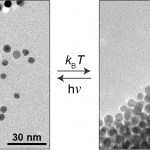Steve Weiner
One day in the future, we may be treating our ailments with microbiotic combinations designed specifically to correct imbalances in our personal microbiomes. We’ll bring our prescriptions on rewritable paper and pay using shimmery optical chips embedded in our cell phone cases or maybe our jewelry. Or we’ll be waiting in our doctor’s office for a simple test of our microbiogenome to see if a light-based nanoparticle delivery treatment is working, while watching iridescent optical displays that change as we move...
These future scenarios (and many more) are all imaginary, but…
Plaster from human dwellings or the signs of a long-abandoned animal enclosure? Tuesday's New York Times describes the collaboration between a chemist - structural biologist Prof. Steve Weiner, who is head of the Helen and Martin Kimmel Center for Archaeological Science at the Weizmann Institute - and American archaeologists. From China to the nearby site of biblical Gath, Weiner and his team have been applying the methods of advanced chemistry to solving riddles of the ancient world. (The answer, at least for the dig at Ashkelon, is fecal and decayed plant matter, meaning the apparent palace…
